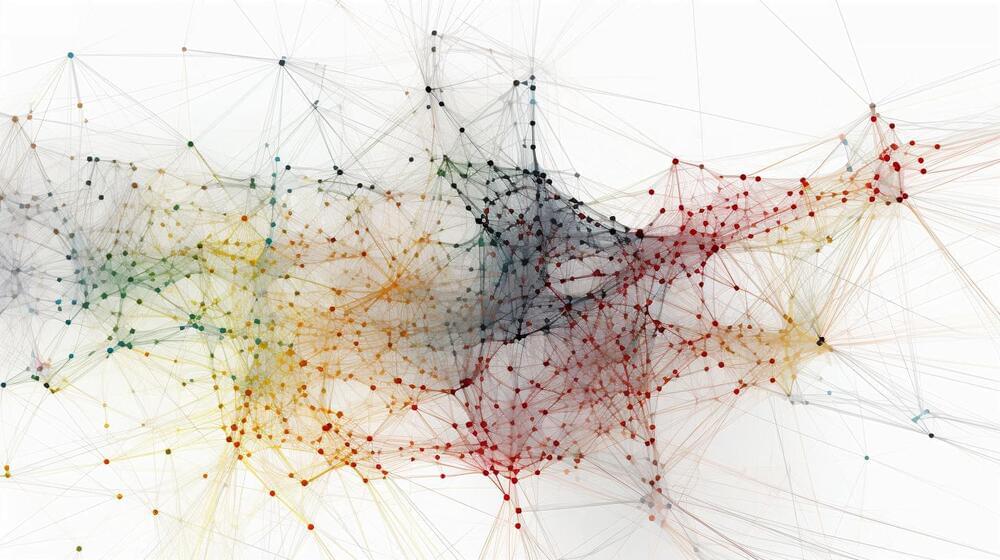How to build large language models? Checkout our guide on the steps involved in building large language models from scratch.



Four individuals have agreed to be sequestered inside a 1,700-square-foot simulated Mars habitat at NASA’s Johnson Space Center to study what it would be like to live on the Red Planet and how humans can learn to cope in that extreme environment.
During their 378-day stay, which officially kicked off earlier this week, they’ll have a surprisingly busy schedule, including a strict exercise regimen as well as a lengthy list of duties, from performing simulated spacewalks to growing crops.
In other words, it’s a demanding job that’s bound to be tough on the crew of four.
Serious Safety Questions about the first paying space tourism flight of Virgin Galactic’s SpaceShipTwo while wishing them the best.
Congratulations to Virgin Galactic for a successful mission today! I looked great! But there are still serious safety questions about the missions going forward about paying space tourism flights on Virgin Galactic’s SpaceShipTwo. I do wish Virgin Galactic the best on their venture going forward!
Inspire your kids to love science!
SAVE 20% OFF New Science Kits Using Code: NEWKITSSAVE20 At Steve Spangler Science dot com! Great Educational Products For Kids! SHOP NOW! https://www.pntra.com/t/SENKTExNSUhDR05OSUxJQ0dPRkxGRw.
Save 1% on GoldBacks from Green Greg’s affiliate link (Use coupon code GreenGregs):
For gardening in your Lunar or Mars habitat GalacticGregs has teamed up with True Leaf Market to bring you a great selection of seed for your planting. Check it out: http://www.pntrac.com/t/TUJGRklGSkJGTU1IS0hCRkpIRk1K
With generative AI taking over the artificial intelligence world, it was only a matter of time before it came to the smart home. Josh.ai, a home automation system for the connected home, has officially launched JoshGPT.
Josh is here to replace your smart home automation system as your all-in-one solution — it says it’s got the brains that your current voice assistant can’t offer you.
This is just the first of likely many generative AI-enabled smart home platforms to come.
Four volunteer crew members entered a Mars-realistic 3D printed habitat.
I just posted a story and commented that people don’t even know how many AI tools exist. There are many. I can decorate my house without an interior designer, and much more. Here are 5 AI editing tools for video.
Help me achieve my goal by joining my channel!||||||||||||||| 63% ||||… 31.5K/50K Joined.
➡️ Hit the [Subscribe] button or click here to sub: https://vod.strms.net/s/UCqdsVtEvUIU-0ebfhSFWOGw.
* ⭐ Newest Subscriber: DameJungle⭐*
TimeBolt: https://geni.us/TimeBolt — 20% Discount Code: Rafael.
Keyper: https://fxfactory.pxf.io/Keyper.
Captionator: https://apps.apple.com/ca/app/captionator-for-final-cut/id1627843786?mt=12
Caption Generator for Final Cut: https://apps.apple.com/ca/app/caption-generator-for-finalcut/id1666645487?mt=12
Final Cut Pro 90 Day Free Trial: https://www.apple.com/ca/final-cut-pro/trial/
Adobe Premiere: http://bit.ly/PremiereRafael.
Enhanced Editing: Final Cut Pro (Waitlist Signup!) https://links.rafaelludwig.com/efficient-editing.
0:00 Intro.
0:24 TimeBolt.
3:51 Keyper.
5:12 Captionator.
6:48 Caption Generator For Final Cut.
8:20 Remix.
10:40 Voice Isolation.
11:59 Adobe Podcast.
• ••••••••••// Support the Channel \••••••••••••••••••••••••••••••••••••••••

SpaceX is revolutionizing the Internet industry with its Starlink broadband satellite network. As of today, the company operates a constellation of around 4,265 Starlink satellites in Low Earth Orbit (LEO) that provide high-speed internet to over 1.5 million subscribers globally. SpaceX is launching Starlink satellites every month to continue expanding service coverage, with plans to launch a total of 12,000 satellites. Besides providing internet to homes and businesses, Starlink beams service directly to user antennas installed on vehicles in motion, like RVs, cruise ships, and aircraft.
In the early days of satellite internet, Geostationary Earth Orbit (GEO) satellites were the norm for aviation. These GEO satellites, positioned at an altitude of approximately 36,000 kilometers above the Earth’s surface, provided coverage to large regions but have limitations in terms of speed and latency – making it hard to livestream or have video calls in-flight. However, everything changed when SpaceX set its sights on LEO and launched thousands of satellites. One of the key advantages of Starlink’s satellites is the ability to provide faster internet speeds because they operate at much lower altitudes of around 550 kilometers. With traditional GEO satellites, the signal had to travel a considerable distance to reach the satellite and then make the round trip back to Earth, resulting in noticeable lag and latency average of around 600ms (milliseconds). In contrast, Starlink’s LEO satellites are positioned much closer to the planet, reducing the distance the signal travels.
Our first delivery with DOM Drone by Flirtey, from the Whangaparaoa store in New Zealand!
DOM (previously known as ‘DRU’) is the personality behind Domino’s innovative customer-facing technology, including our bots, autonomous delivery vehicle, drone and Pizza Checker. He is cheeky and endearing, but most importantly he puts the customer at the heart of everything he does. Rebranded to ‘DOM’ in 2019, he is our newest recruit and helps our team members to create efficiencies in their jobs.

Four volunteers are about to enter a simulated Mars habitat where they’ll spend the next 378 days as part of ongoing preparations for the first crewed mission to the faraway planet.
The specially designed, enclosed habitat at NASA’s Johnson Space Center in Houston, Texas, will host Alyssa Shannon, Ross Brockwell, Kelly Haston, and Nathan Jones from Sunday, June 25. The team’s experience spans science, engineering, and health, and each member will use their specific skills during their stay.
The mission will be the first of three one-year Mars surface simulations, called CHAPEA (Crew Health and Performance Exploration Analog).
Debris field found — the crew perished in a catastrophic implosion. What are the lessons to be learned from this? How does this apply to future space, stratospheric, and oceanic tourism?
Inspire your kids to love science!
SAVE 20% OFF New Science Kits Using Code: NEWKITSSAVE20 At Steve Spangler Science dot com! Great Educational Products For Kids! SHOP NOW! https://www.pntra.com/t/SENKTExNSUhDR05OSUxJQ0dPRkxGRw.
Save 1% on GoldBacks from Green Greg’s affiliate link (Use coupon code GreenGregs):
For gardening in your Lunar or Mars habitat GalacticGregs has teamed up with True Leaf Market to bring you a great selection of seed for your planting. Check it out: http://www.pntrac.com/t/TUJGRklGSkJGTU1IS0hCRkpIRk1K
Awesome deals for long term food supplies for those long missions to deep space (or prepping in case your spaceship crashes: See the Special Deals at My Patriot Supply: www.PrepWithGreg.com.
For that off-grid asteroid homestead stock up with Lemans before you blast off: